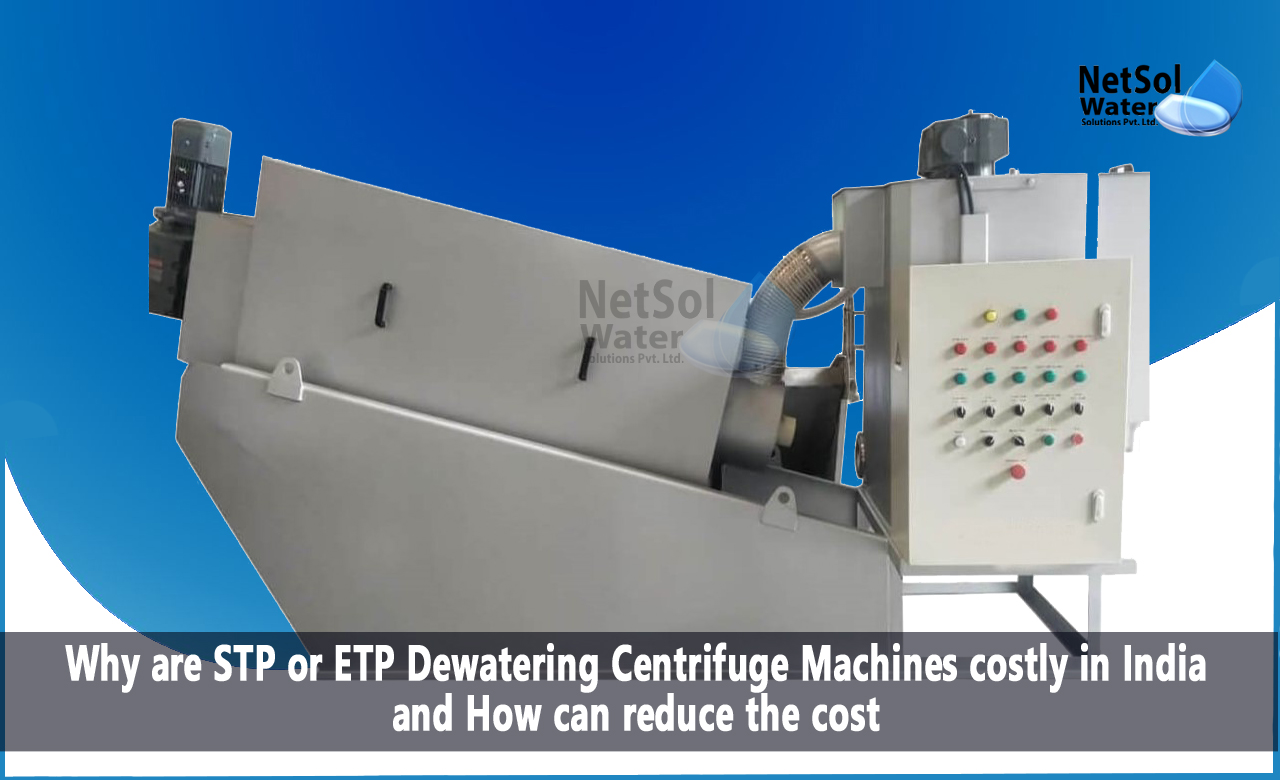Sewage Treatment Plants (STPs) and Effluent Treatment Plants (ETPs) are essential for maintaining environmental standards and ensuring safe disposal of waste. However, one of the biggest challenges faced by these plants is the dewatering of sludge. This is where centrifuge machines come in. They are used to remove the water content from sludge and make it easier to dispose of. In India, these machines are quite costly, and in this blog, we'll explore why that is and what can be done to reduce their cost.
Why are STP/ETP Dewatering Centrifuge Machines costly in India?
There are several reasons why STP/ETP dewatering centrifuge machines are costly in India.
Firstly, the cost of manufacturing these machines is high. Centrifuge machines are complex and require precise engineering, high-quality components, and a skilled workforce to manufacture them.
Secondly, the raw materials used in manufacturing these machines are also expensive. Many of the components used in centrifuge machines are imported, and the fluctuations in exchange rates can significantly affect their cost.
Thirdly, the demand for these machines in India is quite high. With the increasing focus on environmental sustainability, more and more companies are investing in STPs and ETPs. This has led to a surge in demand for centrifuge machines, which has, in turn, driven up their cost.
How can the cost of centrifuge machines be reduced?
There are several ways in which the cost of centrifuge machines can be reduced:
- Encouraging local manufacturing: India has a large manufacturing base, and encouraging local manufacturing of centrifuge machines can significantly reduce their cost. This can be done by providing incentives to manufacturers or by promoting technology transfer from foreign companies.
- Bulk procurement: If STP/ETP operators come together and procure centrifuge machines in bulk, they can negotiate better prices from manufacturers.
- Standardization: Standardizing the design of centrifuge machines can help reduce their cost. This would allow manufacturers to produce these machines on a larger scale, reducing the cost of manufacturing.
- Use of alternate materials: Manufacturers can explore the use of alternate materials that are cheaper but still meet the required specifications.
What are the other alternatives to dewater sludge in India?
While centrifuge machines are the most commonly used method for dewatering sludge, there are other alternatives available in India. These include:
- Belt filter press: This is a machine that uses a series of belts to press and squeeze water out of sludge.
- Vacuum-assisted drying beds: In this method, sludge is spread out on drying beds and then subjected to a vacuum to remove the water content.
- Solar drying: This method involves spreading out sludge on drying beds and exposing it to the sun to dry.
Conclusion:
STP/ETP dewatering centrifuge machines are essential for maintaining environmental standards and ensuring safe disposal of waste. While their cost is high, there are several ways in which it can be reduced. By encouraging local manufacturing, promoting bulk procurement, standardizing designs, and exploring the use of alternate materials, we can make these machines more affordable. Additionally, there are several alternatives available in India for dewatering sludge, and operators can explore these methods to reduce their dependence on centrifuge machines.
Visit enquiry@netsolwater.com or place a call at +91-9650608473 to know more.



